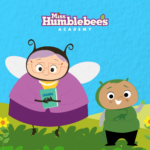All parents know that one of the major focuses during the first year of school is reading and literacy, and while most parents want to give their child the strongest possible start when it comes to school, sometimes they’re at a loss for how to get their child ready to read.
Teaching something like reading can seem daunting without knowledge of where to start, but it doesn’t have to be.

Get Your Child Ready to Read With These Teaching Strategies
Educators have come up with many effective strategies for teaching literacy and most of them can be transferred to a home setting. If you’re the parent of a pre-school or kindergarten aged child, try these techniques to help your child gain important literacy skills.
1. Read Aloud
One of the best ways to increase kids’ excitement in reading is to read aloud to them as often as possible. If you are a parent or a teacher, spend at least three sessions a week reading aloud with your children.
Weekly read-aloud sessions involve more than just turning the book’s pages and saying the words.
You can express your own excitement about the story, the characters, and pictures so that he or she will be excited too. With your enthusiasm, the child can expand his or her understanding of the story. Try to get the child involved in the story and relate his or her real-life experiences as part of the read-aloud sessions.
Asking questions about the story will involve children further as they predict what will happen next. By actively participating in the session, children will acquire the necessary skills that promote their reading abilities. You can even change the story depending on your child’s responses.
2. Surround your child with print
Children need to be surrounded by words in order to understand how they work. Words can come in the form of magazines, books, bulletin boards, or signs in and around your home. All in all, kids need to learn the concept of how written words relate to spoken words and how letters make sounds and words.
Most educators start with alphabet books and puzzles to help pre-schoolers learn the connection between letters and sounds. This technique also allows children to recognize and distinguish letters and begin to make letter-sound connections.
3. Use technology
To have better control of learning, parents should accept computers as lifelong learning tools. Children’s logical thinking, the ability to solve and assess problems, and their learning skills are enhanced with the help of computers.
These devices are also important tools for helping children learn how to read. As their minds are still developing, pre-schoolers often find it easier to find the letters they are looking for on the computer’s keyboard. Parents can help children search for letters and encourage them to make the letter sounds before writing them on paper.
Providing your child with a strong start in literacy does not have to be difficult. If you’re unsure of what areas to focus on, be sure to check out our FREE Kindergarten Readiness Checklist.










